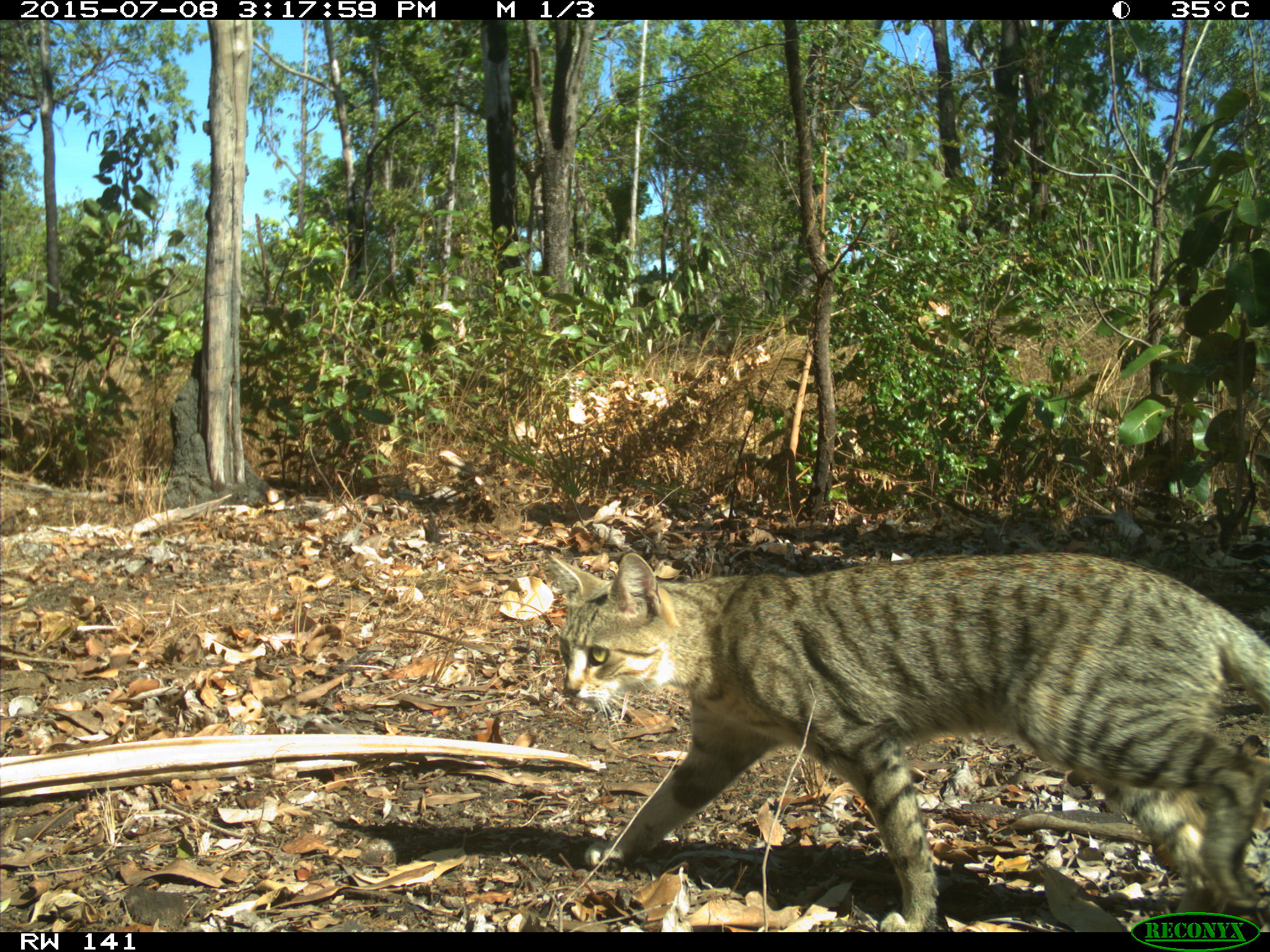30 April 2018
Small and medium-sized native mammals have suffered severe declines across much of northern Australia, including within protected areas such as Kakadu National Park.
A new paper published in Wildlife Research by Hub researcher Danielle Stokeld from the NT Department of Environment, Parks and Water Security and colleagues, shows that predation by feral cats is a major pressure on these native mammals, though dingoes may also play a part in limiting native mammal recovery in Kakadu.
The study, a NERP project led by Dr Graeme Gillespie, compared how prey frequency changed in feral cat and dingo scats in Kakadu from the early 1980s to 2013-15 – spanning a period of severe native mammal declines. The research found that feral cats are highly effective predators of small and medium-sized mammals, finding and preying on them even as they have become more scarce. These impacts on mammals may be made even worse by other disturbances such as fire and grazing that change the landscape in ways that favour hunting by cats.
A NESP Northern Hub project, Investigating feral cats in small mammal decline, continued this work by investigating how mammal populations respond when predators (cats and dingoes) are removed from and kept out of areas. A current project run with the Threatened Species Recovery Hub is now building on this and other work to inform management priorities to help recover threatened mammals in northern Australia, especially in relation to fire and feral cats. For more information please contact Danielle Stokeld.

Feral cat caught on a remote camera trap. Photo by NT DEPWS.
Want to know more about the Resilient Landscapes Hub's activities and our research into practical solutions to environmental problems? Stay informed about activities, research, publications, events and more through the Hub newsletter.